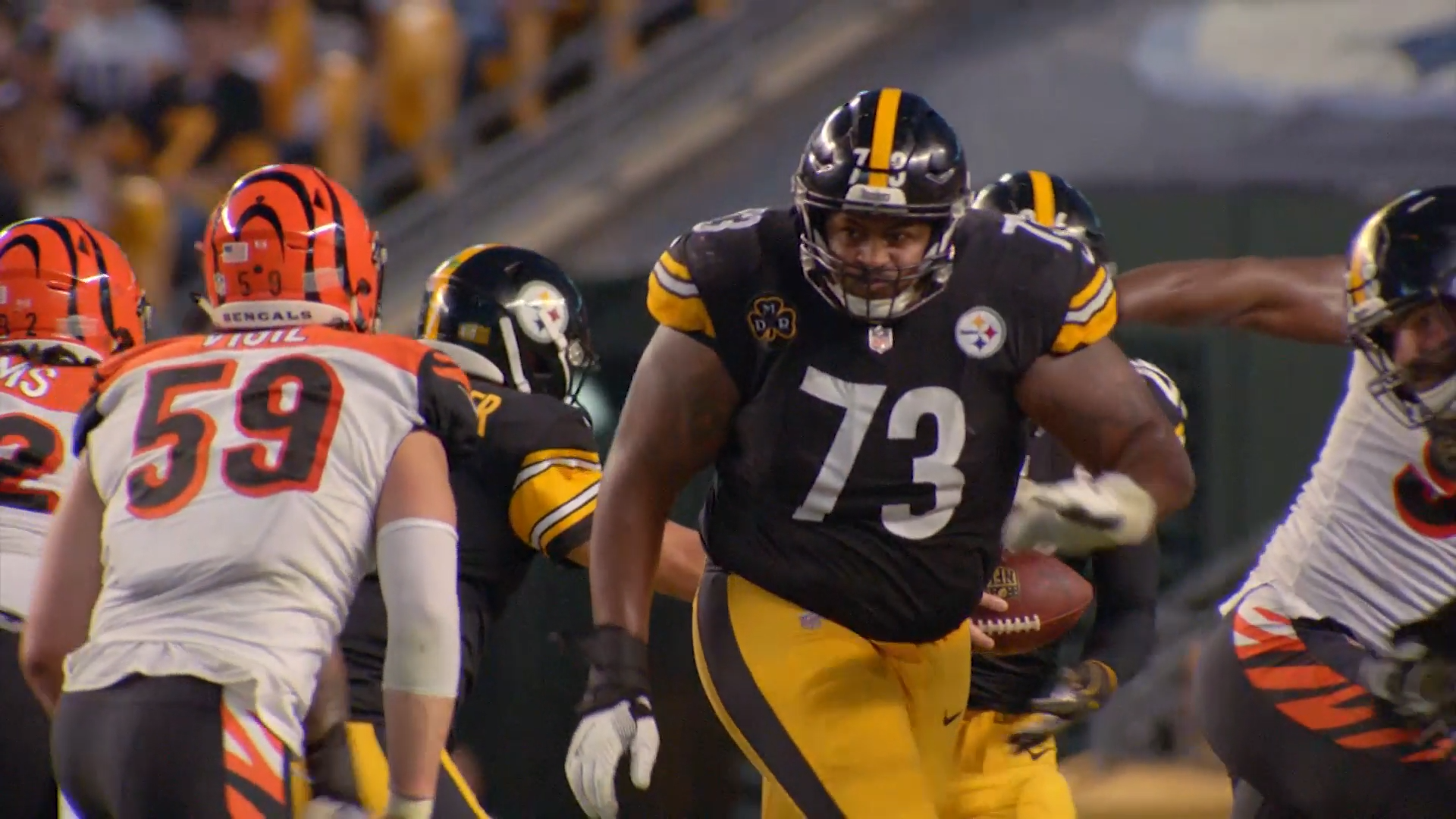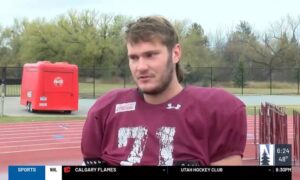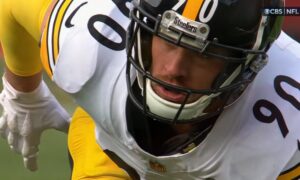It’s been awhile since we focused on the All-Time Steelers’ team using non-Hall of Famers edition. The last time we took a look at the series, we left off with the tight end position, highlight Steelers’ all-time great Heath Miller at the position.
Now, we roll right along here within the All-Time Steelers’ Team featuring non-Hall of Famers, this time focusing on the offensive line. In the trenches, the Steelers have a relatively long, illustrious history, having seen a number of players enter the Hall of Fame along the offensive line, including the likes of Walt Keisling, Mike Webster, Dermontti Dawson, and Alan Faneca.
Obviously, those four are out of the running for this series, and I’m including Maurkice Pouncey in that group as well, as I do believe he’ll be inducted into the Hall of Fame shortly after he becomes eligible in another four seasons.
Below is a reminder of how the offense and defense will look for this series, as well as highlighting some of the previous pieces in the series overall.
Offensively, I will set it up using 11 personnel, meaning one running back, one tight end, no fullback, and three wide receivers, mainly because I would want to see this group play in today’s game.
Defensively, I’m using the traditional 3-4 scheme, so no slot cornerback or anything like that. Just a base 3-4. I’ll also select a kicker, punter, and return specialist, giving me 25 players to write about.
Selections made so far:
QB — Kordell Stewart
RB — Le’Veon Bell
WR — Buddy Dial
WR — Louis Lipps
WR — Santonio Holmes
TE — Heath Miller
Focusing on the offensive line today, I wanted to make sure I picked a player at each position across the line, rather than choosing the top five overall sans position.
Knowing that, it took me awhile to narrow it down to my selection at each position, starting with left tackle Jon Kolb.
Kolb was selected in the third round of the 1969 NFL Draft out of Oklahoma State. For 13 seasons, Kolb proudly wore the black and gold, starting at left tackle in 11 of those seasons starting in 1971, protecting the blindside of Terry Bradshaw while opening up massive rushing lanes for Franco Harris and Rocky Bleier. Kolb went on to play 177 career games with the Steelers, starting in all four Super Bowl victories, eventually earning a spot on the Steelers’ All-Time team, the Steelers’ 50th season All-Time Team, and a spot in the Steelers’ Hall of Honor.
Surprisingly, Kolb was never named to the Pro Bowl, and was named to just one All-Pro team in 1979, despite being one of the best left tackles in football for more than a decade. Kolb will never sniff the Pro Football Hall of Fame due to the lack of individual accolades, but he’s in the Steelers’ Ring of Honor, and rightfully so.
At left guard, I debated between the likes of Sam Davis, Craig Wolfley and Ramon Foster before ultimately choosing Foster.
Foster, an undrafted free agent in 2009 out of Tennessee impressed right away, competing for the starting right guard job as a rookie, beating out that year’s third-round pick in Kraig Urbik to take over for the injured Darnell Stapleton. Coming off of his rookie season in which he started four games and appeared in 14, Foster then transitioned to left guard, where he started eight games in 2010 before moving into the starting role full time at left guard, starting and playing in at least 14 games a year from 2011 to his retirement after the 2019 season.
During his time in Pittsburgh, Foster started in 145 games (160 games played) and signed three separate multi-year contracts, becoming a staple of the Steelers’ high-powered offensive attack in the mid-2010s and was consistently considered one of the top guards in the NFL each season by Pro Football Focus, starting in 2015.
With Kolb and Foster on the left side of the offensive line, and Pouncey out of the discussion at center, I found myself debating between Jeff Hartings and Ray Mansfield at center before ultimately choosing Mansfield.
Often forgotten about at the position due to the prominent Hall of Fame careers of Mike Webster and Dermontti Dawson, Mansfield played an instrumental role in helping establish the Steelers’ dynasty in the 70s. Originally drafted by the Philadelphia Eagles as a defensive tackle in 1963, Mansfield moved over to the Steelers in 1964 and played on the defensive line for two seasons before transitioning to the offensive line.
Once on the offensive side of the football, Mansfield quickly became the started and held the job down for a decade from 1966 to 1976, playing and starting in two Super Bowls, played in 182 consecutive games and recorded 152 starts for the black and gold before eventually being succeeded by Webster. As a Steeler, Mansfield was named to two All-Pro teams in 1972 and 1975.
At right guard I had to stick with 70s Steelers’ dynasty, choosing Gerry Mullins as my right guard on the all-time, non-Hall of Famers team. Mullins, drafted in the fourth round of the 1971 NFL Draft out of USC, started for eight years along the Steelers’ offensive line, winning four Super Bowls and had a key block in Super Bowl IX that sprung Franco Harris for a touchdown.
During his Steelers’ career, Mullins was instrumental in the trap play and started 87 games while seeing action in 124 total. A fun fact about Mullins? He had two receptions for 10 yards in his career, both of which went for touchdowns. Mullins was also named to the franchise’s 50th Anniversary All-Time team with Kolb.
Finally, at right tackle, I had to go with the legendary Tunch Ilkin, may he rest in piece. Ilkin was a fantastic underdog story for the Steelers, much like Foster. A sixth-round draft pick out of Indiana State in 1980 by the Steelers, Ilkin struggled to catch on with the team before eventually stepping into a starting role due to injuries. Seizing upon his opportunity, Ilkin went on to play in 176 games for the Steelers from 1980 to 1992, starting in 143 of them, earning two trips to the Pro Bowl in 1988 and 1989 while creating the famous “Lunch Punch” for linemen that is still used to this day.
There you have it: my all-time Steelers’ offensive line while not using Hall of Famers. Left to right, here’s how they’d look lined up:
LT — Jon Kolb
LG — Ramon Foster
C — Ray Mansfield
RG — Gerry Mullins
RT — Tunch Ilkin
Let me know your thoughts on the makeup of the offensive line in this exercise. Make an argument for other names as well! Let’s have a fun discussion below!








